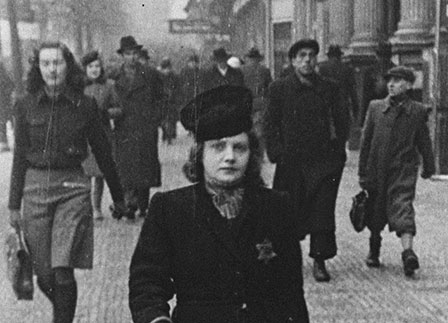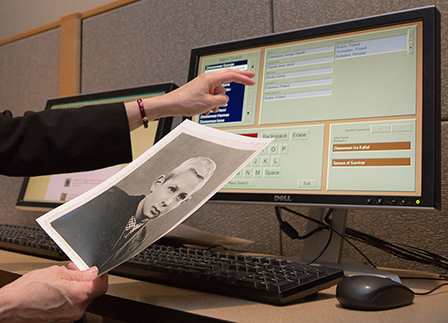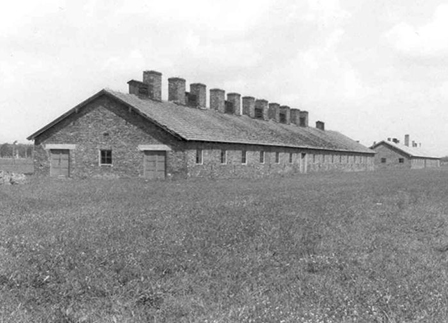Overview
- Caption
- Felicja Berland poses with her friend Genia Laks wearing the hats of their school uniform.
- Date
-
1932
- Locale
- Chelm, [Lublin] Poland
- Variant Locale
- Kholm
- Photo Credit
- United States Holocaust Memorial Museum, courtesy of Felicia Berland Hyatt
Rights & Restrictions
- Photo Source
-
United States Holocaust Memorial Museum
Copyright: United States Holocaust Memorial MuseumProvenance: Felicia Berland Hyatt - Published Source
- Close Calls: The Autobiography of a Survivor - Hyatt, Felicia Berland - Holocaust Library
Keywords & Subjects
Administrative Notes
- Biography
- Felicia Hyatt (born Felicja Berland) was born on May 2, 1920. She was the only child of Sara Hilf and Abraham Berland, who ran a bakery in Chelm, Poland. Felicja attended a public gymnasium in the 1930s. She was one of four Jews in her class who were admitted under the quota system. Felicja's parents, moderately observant Jews, supplemented her secular education with private tutoring in Hebrew and Jewish liturgy. In June 1938 Felicja moved to Warsaw with her mother. The following spring her father left for Bolivia, hoping to gain entry into the United States. He did so in 1941. Felicja and her mother remained in Warsaw the first year of the war, but chose to return to Chelm in November 1940 to avoid being closed into the Warsaw ghetto. For the next two years they lived in the open Chelm ghetto, where they were forced to serve in labor battalions. For a time Felicja also worked for the Chelm Judenrat distributing bread rations. Her mother bought and sold clothing on the black market. On the eve of the final liquidation of the ghetto, Felicja and her mother went into hiding with two different Polish families. After the action Felicja was mistakenly informed that her mother had been shot. Felicja then resolved to kill herself and sat down on an isolated railroad track to await a passing train. She was pulled off by a railroad official who told her the train had been derailed by partisans. Soon after Felicja learned her mother was still alive. They were reunited briefly but decided their chances of surviving were better if they separated. From Chelm Felicja moved from place to place until she was able to secure false papers. In Krakow she found a position as a housekeeper for the family of an SS officer. She remained there until she was arrested for carrying false papers in February 1943. Initially detained in the notorious Monte Loupich prison, her former SS employer had her transferred to the prison in the Krakow ghetto. During the liquidation of the ghetto, a few weeks later, Felicja and her fellow prison inmates were deported by truck to Auschwitz. The group was about to be shot in the main camp when an order was issued for their immediate transfer to Birkenau. Felicja was among 25 women who were selected for the gas chamber. The group, however, was given a sudden reprieve by Dr. Josef Mengele, when he yielded to the protestations of several women who claimed they had been misidentified as Jews during the round-ups in Krakow. The women did not know whom they were addressing when they stopped Mengele. Unaccountably, the SS doctor seemed to believe their story. After accompanying them back to the unloading ramp, he directed them to the prisoners' barracks. Felicja remained in Auschwitz until October 1944 when she volunteered with a group of Hungarian women for a transport to the Reich. She was sent to the Stare Mesto (Nad Vahom) labor camp, where she was liberated the following May by units of the Red Army. After the liberation Felicja returned to Poland. She lived in Lodz for several months with friends from Auschwitz. In the spring of 1946 she left for Stockholm, where her father sent funds to support her until she could emigrate. It was not until the summer of 1948 that Felicja was able to join her father in New York. Her mother did not survive the war.
- Record last modified:
- 2004-01-08 00:00:00
- This page:
- http://collections.ushmm.org/search/catalog/pa1112061



